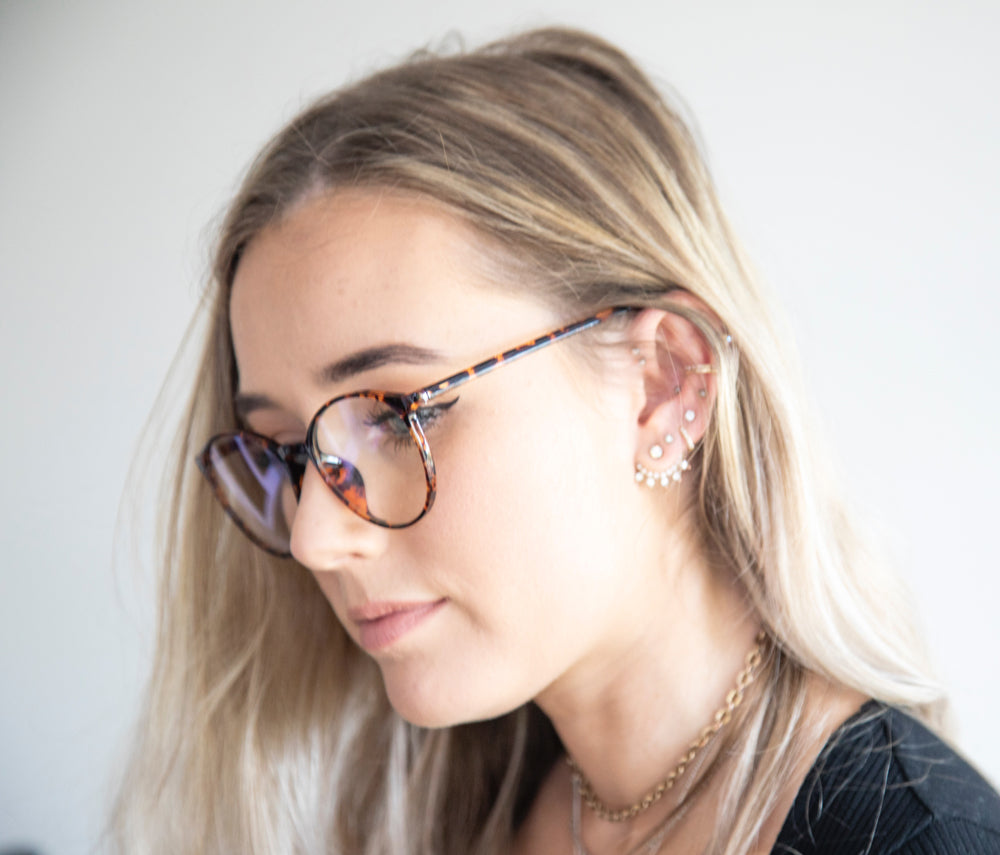One of the hottest piercings around is the industrial piercing. It’s a very anatomy-dependent piercing, but it comes in multiple configurations so if your ear is not ideal for the classic version it doesn’t mean you’re out of luck. Read on to find out why!

A standard industrial piercing is a single barbell that connects a helix piercing and a forward helix piercing. The barbell is generally about 1 ½” in length and 14 gauge. The actual piercing is done all at once because if done separately, there is a chance of jewelry migration that would prevent the barbell from fitting properly. So instead of a single hole being pierced, be prepared to get two! They take an average of 6 to 12 months to heal and during that time you must be careful to avoid knocking it or getting it tangled in things like hair or clothes – as well as keeping it clean! A clean piercing is a happy piercing! (Remember – the only thing you ought to clean new piercings with is sterile saline spray. You may also want to try sleeping with your head on a traveler’s neck pillow, so your piercing isn’t touching anything. This can help prevent irritation bumps.)
Aside from the standard industrial, there are a few other types. There’s also the vertical industrial, which offers far more options for placement. They can connect helix and conch, the rook and conch, or even two conch piercings. The barbell ends are frequently located behind the ear, but with so many placement options you could still have the barbell ends on the top area of the ear. The jewelry options are as many and as varied as the standard horizontal version. In fact, the vertical setup can really showcase the charm on your jewelry. Chain dangle industrial barbells can look especially impressive with this particular setup and can be more comfortable to wear, depending on the size of your ear.

Two of the less common variations include the floating industrial and the custom industrial. A floating industrial connects parts of the ear other than the helix and forward helix. This is a great option for people who don’t have the anatomy for a standard industrial but requires that you meet with your piercer to figure out what will work for your specific ear. The custom industrial can connect multiple points of the ear, three or even four in one piercing! But like the name says, this requires a consultation with your piercer and will almost certainly require custom jewelry.
If you are wondering why anatomy is so important when it comes to an industrial piercing, the fold of the ear needs to be deep enough to support the barbell. However, the flat of the ear needs to be deep enough to where the barbell doesn’t touch it. If the flat is too high, the barbell can begin to rub at the skin and eventually could even wear the skin down all the way to the bare cartilage. This can lead to some nasty scarring so if your piercer says that a traditional industrial is a no-go, listening to them is the best bet.

If you’ve been thinking about getting a new ear piercing, the industrial is a great way to go. A classic look that will never go out of style, as well as one that offers an endless number of jewelry options, the industrial has something to offer every look and a variation for every anatomy. Plus…let’s face it….it looks super cool. And isn’t that one of things we all love about piercings?






